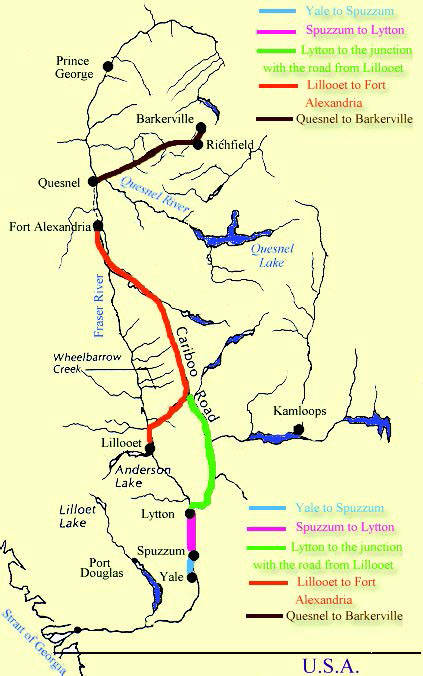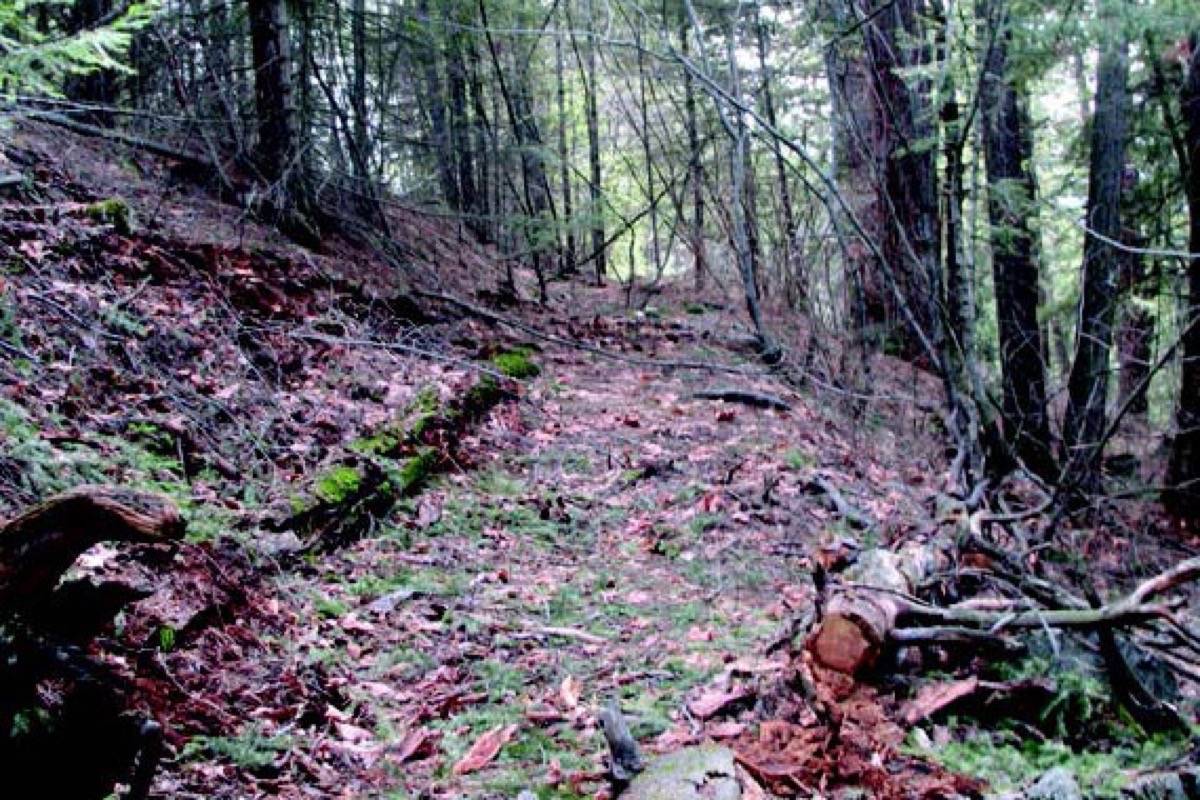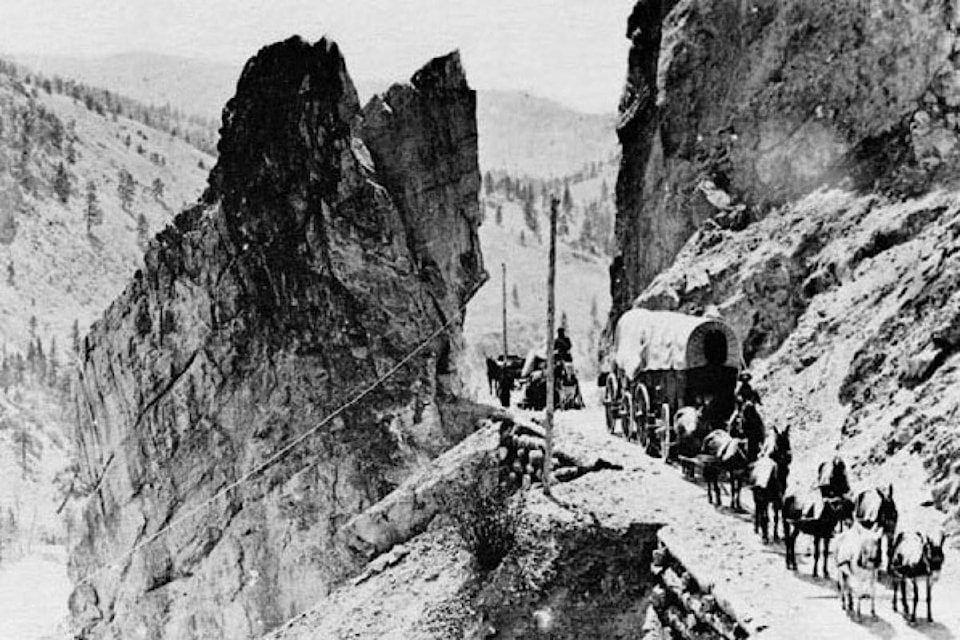When it was constructed in the early 1860s, the Cariboo Wagon Road stretching from Yale to Barkerville was described as “the eighth wonder of the world” and considered an engineering marvel, traversing as it did some of the most treacherous and difficult terrain in North America. Much of the road has been built over since then, but the New Pathways to Gold Society (NPTGS) has received funding from the BC Rural Dividend Program to rebuild sections of the historic road north of Clinton.
The Society has recently received $54,550 for the initial phase of the Cariboo Wagon Road Restoration Project (CWRRP), as one of 11 projects in the Cariboo region to receive funding under the program. The CWRRP is a partnership between NPTGS and the District of 100 Mile House. The project also enjoys support from the Cariboo Regional District, BC Parks, and the Outdoor Recreation Council of BC.
This initial phase of the project will focus on identifying and surveying sections of the Cariboo Wagon Road between Clinton and Lac La Hache. A three-person technical crew will survey the area to determine authenticity, identify access/permitting issues, and prepare a detailed “restoration prescription” for intact road sections.
“It was great to see the funding come through,” says Don Hauka, communications/creative director of NPTGS. “For phase one we decided to look at those areas that were ‘best bets’ in terms of topographical access and the largest section of intact road.
“This section is about 100 kilometres of road, with some portions more intact than others. There are chunks under the [current] road, under railway lines. We want to get it surveyed by GPS to establish where the road actually was.”
The route of the Cariboo Wagon Road was surveyed by Royal Engineers, who then worked alongside First Nations, Chinese, and gold seekers from around the world to construct the road, which connected the goldfields of the Fraser, Thompson, and Cariboo with the coast.
“The Royal Engineers had a standard method, so it’s easy to tell what was part of the Cariboo Wagon Road,” says Hauka, noting that some areas now thought to have been part of the road were not. “Once we have the road established and surveyed, we can develop the restoration prescription. The section at 100 Mile House is in really good shape, so that will mean dealing with the trees and accumulated overburden.”
He notes that other sections of the road are in much rougher shape. “We need to find out what it will take to restore it, get a ballpark amount, decide on what amenities we want to see — such as picnic tables or outhouses — and consult with stakeholders. Everyone has a story about the road.
“And the First Nations perspective is critical. The Cariboo Wagon Road was built on their trade route.”
Hauka says that the idea is for people to be able to walk or bike the road. “We want to restore as much [of the road] as possible between Yale and Barkerville, and incrementally build a world-class heritage and recreation site for the province.
“The Cariboo Wagon Road is iconic. It was the first B.C. megaproject, but many people don’t realize that or have forgotten it. People from all over the world worked to build it, so it’s the same as today’s economy: everyone working together.”
NPTGS Indigenous co-chair Cheryl Chapman says that consulting First Nations is critical, because Indigenous Peoples made a big contribution to the road’s construction. “First Nations provided much of the labour as well as knowledge of the local terrain and their existing trails network,” says Chapman. “Were it not for the contributions made by Indigenous Peoples and the early Chinese arrivals, the Cariboo Wagon Road might never have been completed.”
“I think it’s a fantastic project,” says Hauka. “There’s lots of interest and excitement in it already regarding fundraising, and partnerships to get things to happen. When you walk sections of the road you’re connecting with the First Nations experience, the Gold Rush experience. You’re walking on millennia of history.”
editorial@accjournal.ca
Like us on Facebook and follow us on Twitter


